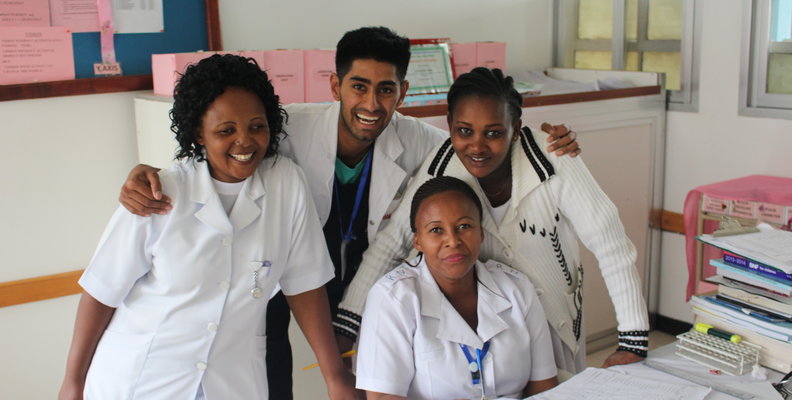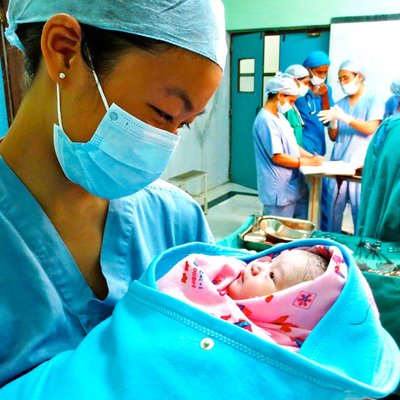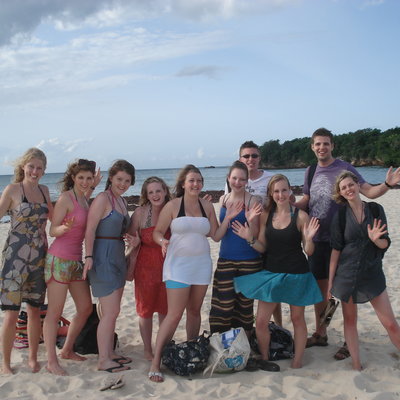Between 69% and 82% of those who die need palliative care, according to a new study published in Palliative Medicine. The Western World has responded by providing hospices to offer pain relief and support during life-threatening illnesses, but the story is very different in developing countries. The reality for many millions of adults and children battling diseases like HIV and AIDS is a loss of all quality of life and often a long, painful death.
Our destinations struggle to deliver palliative care, but the WHO Global Atlas of Palliative Care statistics show that Africa faces the biggest challenge. We interviewed Dr Charles Campion Smith, a Macmillan GP adviser who has just returned from a trip to introduce palliative care to a region in Tanzania.
What was the aim of your visit?
While there have been great advances in the treatment of HIV/AIDS in East Africa, still less than a third of those affected are receiving treatment, and there is still a considerable burden of care for patients with cancer, too. There is much interest in using the principles of symptom control and palliative care pioneered by UK hospices in Tanzania. We hoped to support introducing palliative care to the Korogwe district and mentoring local health leaders in teaching, clinical assessment, and treatment. The aim was to bring about improvements that would be sustained after our stay.
Was there any understanding of the WHO definition of palliative care?
People understand palliative care, but statistics show that Tanzania has just two specialist doctors and 37 nurses per 100,000 people. We gave presentations at the hospital’s multidisciplinary clinical meetings to introduce the concept of palliative care and the need for this to embrace physical, social, psychological and spiritual aspects. Later, we explored pain assessment, the use of oral morphine (which was previously not available locally), and the use of other drugs and approaches for symptoms in palliative care.
We were struck by the stoicism of local people, who have modest expectations of the health service and appreciate any efforts to lessen their distress.
How did you work with the local healthcare staff?
We formed a core local palliative care team. It included a charismatic nurse coordinator, a skilled clinical officer, the hospital pharmacist, an HIV/AIDS NGO representative, and the newly appointed hospital matron. We worked with them on a plan for the following three months, focusing on how they could support each other, include others, learn together, and teach others.
What resources did you use for teaching?
The Palliative Care Toolkit, developed by Help the Hospices and the World Palliative Care Association, has the message, “There is nothing you can do.” We felt this message was particularly strong in an area with minimal resources. The toolkit also has a KiSwahili translation, which proved invaluable as many healthcare workers had limited English skills.
How did you communicate the theory behind palliative care to communities?
Because many palliative care providers are based in the community, we held meetings in local health centres and dispensaries. We invited clinical officers, nurse-midwives, nursing assistants, and voluntary village health workers.
We started by asking participants to share their views of the care they would wish for themselves or a family member. We then gave presentations about the concept of palliative care. This led to teamwork sessions and role-play, which allowed us to demonstrate the nonverbal aspects of good and poor communication and allow participants to reflect on its relevance to their working situation.
We focussed on patients and how to identify them in a hospital or at home; assess physical, psychological, social and spiritual needs; treat pain and other symptoms; and use oral morphine appropriately and safely. We also tried to instil the need to make more links within the wider community.
Were the meetings successful?
One hundred and sixty health workers participated in the six sessions. We also taught nursing students, a local HIV/AIDS patients group and the local interfaith religious leaders group. This resulted in Muslim and Christian faith leaders agreeing to collaborate to provide spiritual care.
In addition to teaching, what else did you put in place?
A practical palliative care approach was modelled by working alongside the nurses and clinical officers in the wards and clinics. We were pleased to be able to add specific interventions, such as the provision of basic opiate analgesia and other simple symptom control measures. A supply of oral morphine was obtained, and procedures were put in place for its safe dispensing and administration. A local palliative care register was established; most patients received only symptomatic care, but a few were referred for palliative radiotherapy.
The African Palliative Care Association acknowledges that although the concept of palliative care is based on a UK model, it must be adapted to African traditions, beliefs and cultures – all of which vary between communities and countries. Did you have to adapt your delivery of palliative care?
We had to consider Tanzania's social, political, and economic context. We learnt that it was always important to balance the benefits and costs (total costs—distress, journey time, absence from home and family, loss of money for children's schooling, etc.) when thinking about treatments for communities in Tanzania, especially those unlikely to have significant or long-term benefits. It is important to frame this as not 'doing nothing' but rather doing something different that better meets people's needs.
With the lack of resources and demands on staff, how did you ensure the continuation of the work?
There were concerns that the work established might not continue—health workers have huge demands on their time, attention, and energy. However, three months after we returned from our first trip, more people were identified as needing palliative care and received appropriate assessment and care as a result.
The Palliative Care Toolkit highlights that health professionals' interests and concerns can be powerful therapeutic tools, and we found this to be true. We were impressed by the enthusiasm and passion for improving services shown by the professionals we worked with, and we were heartened by the eagerness of religious leaders from all faiths to collaborate.
Our second trip showed that there has not been much fundamental change in the national early identification and treatment of disease. Many cancers, for example, present late when curative treatment is not possible and palliative care is the only helpful option. With that in mind, we were pleased to see pockets of better care with staff skilled in the holistic assessment (considering physical, psychological, spiritual and social factors) of people affected by solid tumours, HIV/AIDS and other progressive and incurable illnesses, and the availability of morphine for both in- and out-patient use.
We were grateful for the opportunity to work with the local community. The welcome we received and the friends we made made the trip a very special experience for us both, helping us focus on what is truly important in caring for patients wherever they are.
Work the World thanks Dr. Charles Campion Smith for his time and insight. If you're interested in learning more about elective placements linked to palliative care in our Tanzanian hospitals or exploring other elective opportunities in Africa, fill out the short enquiry form, and one of our expert elective consultants will get back to you.

Electives in Africa
If you want to find out more about our electives in Africa, get in touch with our expert team via our short enquiry form.
If you want to find out more about our electives in Africa, get in touch with our expert team via our short enquiry form.







